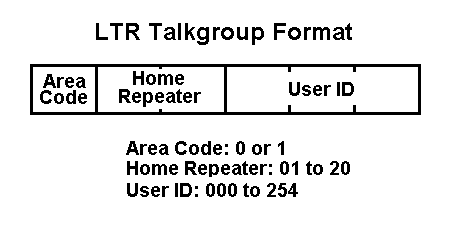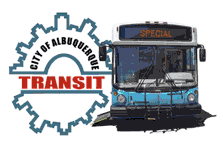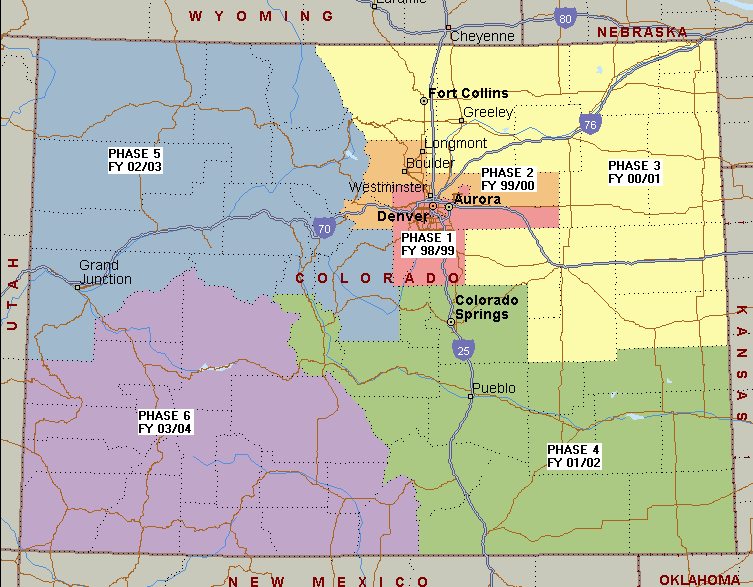| This article first appeared in the October 2003 issue of Monitoring Times. |
Public safety systems used by police and fire departments are not the only trunked radio traffic available to scanner listeners. Logic Trunked Radio (LTR) is commonly used by businesses and other commercial entities as a reliable, relatively inexpensive way to keep in touch while on the move.
Quebec, Canada
Dear sir,Let me start out by saying I read your column in Monitoring Times each month and I appreciate your wealth of knowledge. This is why I write to you today.
There is an ambulance dispatch service just north of the border from me in Quebec called Alerte Sante. I live in northwestern Vermont, and I can hear Montreal, which is 75 miles north, crystal clear. Alerte Sante is on a LTR system.
Here is the info I have.
I know the id center numbers can tell you the channel number, but what happens if the ids on 6 of the 8 repeaters are 1-01-001? I don't know what to do next. The frequencies are as follows. I have programmed them in in this order.
866.9375, 867.5625, 867.9375, 867.9625, 867.9875, 868.0375, 868.0625, 868.1375
When I am in trunk manual mode I get the ID of 1-01-001 on
867.9375, 867.9625, 867.9875, 868.0625
Also I looked up the ambulances on this system, and they are assigned to the following only
867.9375, 867.9625, 867.9875, 868.0625, 868.0375
Any help would be appreciated and thanks in advance.
Jeff
Logic Trunked Radio (LTR) is an older type of trunked radio, different in many ways from the more common Motorola and EDACS systems. The biggest technical difference is that LTR does not have a dedicated control channel. All of the radio frequencies may be used for voice traffic.
All mobiles in a LTR system are assigned to a "home repeater." When a mobile is not involved in an active conversation it is tuned to the home repeater frequency, listening to messages the repeater is transmitting. If a repeater is not engaged in a call (it's idle), every ten seconds it will transmit a brief information message to let mobiles know that the system is up and running. If a repeater is engaged in a call (it's busy), a sub-audible message will be transmitted along with voice traffic, informing the listening mobiles of the active talkgroup and which other repeater is idle.
When a mobile wishes to initiate a call, it tunes to the idle channel and transmits a service request. Usually the idle channel will be the home repeater, unless that repeater is busy with another call. Whether idle or busy with a conversation, the repeater will transmit a message that allows a mobile to determine which channel in the system is free.
LTR Talkgroups
LTR uses a talkgroup format composed of three fields: Area, Home Channel and User ID.
In most LTR systems the Area value is typically 0. If there is another LTR system nearby, one system will have Area set to 0 and the other will have Area set to 1. The mobiles will be programmed with the same Area value as the repeaters. This allows the mobile radio to distinguish between messages from it's own system (which it will process) and messages from a foreign system (which it will ignore). The same is true of the repeaters -- they will ignore transmissions from mobiles that have a different Area value.
The Home Channel number is the repeater number to which the mobile radio is assigned. Since an LTR system may have as many as 20 repeaters, this value can be anywhere from 01 to 20. In LTR systems with fewer than 20 frequencies there will usually be gaps between channel numbers, as we'll soon see.
The User ID can range from 000 to 254, and identifies the individual radio or talk group. As many as 250 ID codes are assigned to each repeater. An ID code may be assigned to a single radio or to a group of mobiles. User IDs above 250 may be used for special system messages.

So, Jeff, what you're seeing with a talkgroup of 1-01-001, means it is part of Area 1, assigned to repeater 01 and has a user ID of 001. You mention that you've seen this talkgroup on at least six of the eight repeaters you've located.
Groupe Alerte Sante ("Health Alarm Group") is a popular dispatch agency for emergency medical services in southern Quebec. They are based out of Greenfield Park (now a borough of Longueuil), across the Saint Lawrence River from Montreal, with a primary repeater located in Covey Hill (867.9875 MHz). Other frequencies used by Groupe Alerte Sante appear to be from different repeater locations.
There are a couple of possibilities for the prevalence of 1-01-001. One is that the repeaters are operating independently as far as talkgroups are concerned. Are you sure the voice traffic on all of these frequencies is related? Do conversations carry across several of these frequencies? Perhaps some of these frequencies are dedicated to different customers. Another possibility is that talkgroup 1-01-001 is simply the busiest talkgroup during the times you've been monitoring. Do you see other talkgroups during busier times of the day?
As for what to do: first, be sure the frequencies are programmed in the proper order in your scanner. Due to the way the system determines which repeaters are free, LTR operators are encouraged to assign repeater numbers with equal gaps between them. For instance, an LTR system with five repeaters typically has repeater numbers of 1, 5, 9, 13 and 17. The gaps between the numbers are always 4, and the gap between 17 and 20 is 3. A system with eight repeaters, as the Groupe Alerte Sante appears to be, would most likely use repeater numbers like 1, 3, 6, 8, 11, 13, 16, 18 or 1, 4, 6, 9, 11, 14, 16, 19. I'd try those number sequences first and see if conversations trunk correctly. Keep in mind that the corresponding radio frequencies may not be in ascending order.
Another thing to try is programming the same frequency in your scanner in channels 1 through 20, then scan in trunked mode. When you hear activity, switch out of trunk mode. The scanner channel that you're on should be the repeater number for that frequency.
If you have a PRO-92 or PRO-2067, the scanner will display LTR talkgroups even if the frequency is programmed by itself in a conventional bank. This will allow you to gather talkgroup IDs and look for patterns without having to program every channel correctly.
Jeff, let us know what you find out!
Albuquerque, New Mexico
Last month William wrote in with a question about EDACS (Enhanced Digital Access Communication System) and the Radio Shack PRO-92 scanner. This month he gives us the details of the transit system he's monitoring in New Mexico.

Dear Dan,This is all very interesting and a great hobby. I always read your column in Monitoring Times magazine - it is a good learning experience.
The city buses are on an EDACS system (call sign WNSS410) in Albuquerque. The frequencies in Logical Channel Number Order are:
856.2625, 857.2625, 858.2625, 859.2625, 860.2625, 856.4625, 857.4625, 858.4625, 859.4625, 860.4625, 856.4875, 856.7125, 857.7125, 858.7125 and 860.9875 MHz.
Some of the talk groups are:
Decimal AFS User
0273 02-021 garbage pickup
0276 02-024 garbage pickup
0278 02-026 litter removal
0279 02-027 garbage pickup
0280 02-030 garbage pickup
0281 02-031 garbage pickup
0289 02-041 dispatcher broadcasts to buses
0290 02-042 transit security
0291 02-043 transit operations and supervisors
0292 02-044 handicap van service
0294 02-046 bus maintenance
0295 02-047 dispatcher broadcasts to handicap vans
0305 02-061 water department
0306 02-062 water department
0307 02-063 water department well maintenance
0308 02-064 water department customer service; sewer
0309 02-065 water department
0314 02-072 storm pumps and sewer
0321 02-081 street maintenance
0322 02-082 traffic signals and signs
0324 02-084 street maintenance
0337 02-101 animal control
There are other talk groups, but I have not been able to determine what they are. Besides the buses, the 02-082 traffic signals and signs is one of my favorites. They discuss the details of traffic signal operation such as timing, traffic plans, traffic progression along routes, loop and camera detectors, signal and power failures, and so on.
William
Colorado
Greetings,Do you have any information in regard to being able to scan the City and County of Broomfield (Colorado)? I know they are part of the APCO Project 25 radio system, but I think they are at 9600 baud...
Thank you in advance,
Tom
Colorado currently operates one of the largest APCO Project 25 trunked radio systems in the United States. Their Digital Trunked Radio (DTR) is expected to provide better coverage and eliminate interoperability issues by replacing a patchwork of older wireless systems with a single, standardized state-wide system. Currently 35 of the 64 counties in the state have partial or complete coverage, from Wyoming down to New Mexico and from the Kansas border westward to the Front Range. More than 8,000 mobile and portable radios are in use.

When the remainder of the state is finally completed there will be 120 repeater sites, each with at least four radio channels. Five dispatch centers across the state will manage the day-to-day communications of an estimated 12,000 radios.
The system build-out in the metro Denver area was complete in 2001, covering part of all of Adams, Arapahoe, Boulder, Clear Creek, Denver, Douglas, Gilpin and Jefferson counties. The system got a workout last March during Denver's record-setting blizzard, supporting three times as many transmissions per day (240,000) as usual.
Broomfield, in north central Colorado, lies between the cities of Boulder and Denver. You may be able to hear the Denver repeater, which uses five frequencies: 866.4375, 867.5625, 867.8125, 868.1125 and 868.7000 MHz. If you're north of Broomfield you might be able to hear the Mead tower in Boulder County, which uses 866.6125, 867.4250, 867.8000, 868.3875 and 868.9875 MHz. Unfortunately, you'll have to monitor these frequencies in conventional mode.
The Colorado system is what's known as a "pure" trunked APCO-25 system, where all of the voice channels carry only digital traffic and the control channel operates at 9600 baud. Other types of APCO-25 systems, if they're trunked, use an older control channel format that runs at 3600 baud. The currently available APCO-25 scanners from Uniden are only able to track 3600 baud systems.
As noted in a previous column, Radio Shack has received FCC authorization for a new scanner, the PRO-96, that promises the capability of tracking 9600 baud APCO-25 systems. Authorization is a necessary step before the scanner can be offered for sale, but as of August there was no announced date of availability. When it finally does come out it's expected to have a retail price of about $500. The best bet at this point is to wait a couple of months for the PRO-96 and see if it lives up to expectations.
Until then, be sure to check my website at www.signalharbor.com for updates on APCO-25 scanners, frequencies, and links. I also welcome e-mail at danveeneman@monitoringtimes.com. Until next month, happy monitoring!